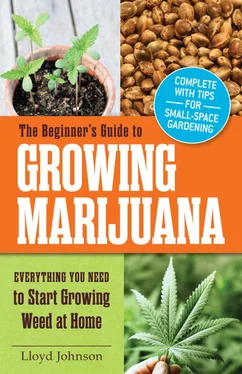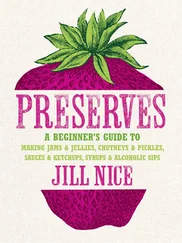When and How to Take Clippings
There are many variables to consider when determining how long to hang your harvest: weather, moisture levels, plant size and type. Expect a minimum of two weeks hanging, with a good possibility that you will wait six to eight. The easiest way to tell if your cannabis is ready to clip is to check smaller branches for “snap.” A branch that is gently bent between two hands should break, not bend. It does not have to snap in half (this would be too dry), but there should be a definite break. Again, as with harvest, the plants will be ready to clip at different times, so each plant must be checked individually for finish.
Clipping Tools
Preparing to clip means having the right space and tools. Clipping a large crop is fun, but it can be a laborious process. You want to have a big table and chairs at a comfortable height for long periods of sitting and working with your hands. You need good light so you can examine the buds closely as you clip. Common sense dictates that the clipping room is not exposed to casual visitors, either by viewing through porch windows or folks stopping by to visit. You will need:
• A pair of pruning shears
• Large sheets of clean glass (framed picture glass is good)
• A pair of small sharp scissors for each clipper
• Gallon zip-top bags
• A Sharpie or other indelible pen
• Large brown paper grocery bags
It’s best to clip one plant entirely before starting another because there’s less chance of mislabeling product. Besides, the way the plants are hanging make this a logical progression as you work your way through the drying shed.
Allow approximately one hour to clip one ounce. This is only a general rule of thumb; some plants’ structural characteristics make them an “easy clipper.” Other types have lots of extraneous sugar leaf and require more finicky scissor work. Sugar leaves are the small leaves near the flowers. The sugar leaf is so named because it usually has enough trichomes to sparkle like sugar crystals, and affects users who ingest it, either by smoking or eating the prepared leaf.
If you estimate a general yield of a pound per outdoor plant, just one plant is going to take approximately sixteen hours to clip. Multiply that by your plant numbers and you should have a fairly good estimate of how much time to plan for clipping activities.
The Clipping Process
Now that your clipping table is set up, you are ready to go. Decide on your first plant and pick up your pruning shears. Cut enough axial branches to make a nice bundle; your table size will dictate how much to start with. Place a paper grocery bag to the left and right of each chair; one will be for bigger remaining fan leaves, and the other for the sugar leaf. You might as well separate the two at this point, as excessive handling can knock the crystals off the dried sugar leaf.
As you work on the plants, keep an eye out for your marked “seeder” branch(es), unless you have already put the seeder branch(es) in a separate area for drying. These should be set aside for careful examination during a seed session.
Start stripping fan leaves off the larger branches; you can do this with your hands. This is advisable, as your fingers are going to get very tired of feeling scissors (blisters are common when clipping big harvests). Cut the smaller branches off the bigger axial and place over your glass (the glass will catch large amounts of kief, the plant’s trichomes, which can be made into the delightful finger hash).
Take your scissors and cut the colas off the branch, right at the nodes. When you finish the branch, you have the option of trimming another one and stockpiling colas to fine clip, or fine clipping as you go. Each person clipping will find a rhythm and process that fits his style; there is no single correct way.
As you fine clip the colas, the goal is to remove the small sugar leaves. Keep moving the sugar leaves to one side of your glass and the finished colas to the other. Periodically put the sugar leaf into your other grocery bag. Now you’re ready to store!
When your pile of colas is big enough, label a gallon zip-top bag with the plant’s information and set the colas in the bag. Depending on the flower characteristics (fluffy or dense), a gallon bag should comfortably hold a quarter pound of colas. You do not want to pack the bags tightly, as you want to avoid crushing and packing down the flowers. If your harvest is small, clean, dry Mason jars are wonderful for storage but require a great deal more space than the plastic bags.
“Breathing” Stored Cannabis
As your cannabis flowers hang and dry, they will end up at about 25 percent of their fresh weight. At this point they are dry enough to store, but they will continue to cure. Drying and curing cannabis actually takes a fairly long time. Depending on the amount of humidity in the drying room, just drying hanging cannabis can take up to eight weeks. Curing continues as the chlorophylls and other pigments in the flowers start to break down. This is what will remove the “green” taste that is associated with uncured cannabis.
Never seal your dried harvest into plastic or glass without periodically breathing the containers during this curing period. This will release gases that the plant matter continues to release. If you fail to vent these gases, the bad taste is trapped and you will end up with some fairly nasty tasting cannabis.
Many growers find it helpful to mark their calendars, breathe the bags or jars once a week, and continue to sample the plant. Usually the curing process takes two to four months, so keep evaluating for progress. You will also notice that when you open a sealed container it no longer puts forth a rush of chlorophyll smell but the sweet aroma of properly cured cannabis. Once curing is completed, you can seal your containers until you want to use the cannabis. Never freeze cannabis; this will have harmful effects to the resins you worked so hard to produce. Store your cannabis in a cool, dark place.
Common Problems and Solutions
The biggest problem outdoor growers hope to experience is suddenly realizing that they have far more green plant material to hang up than they had planned for. This can be dealt with, as the plants are going to lose a lot of water weight and bulk very quickly. Sometimes a spare room has to be put into use for a day or two, but do not panic; you will be able to move the hanging plants quite a bit closer to each other very soon. A shower rail can make an excellent temporary hanging spot for a large plant, or even the top rails of a canopy bed. You can use these temporary spots while you continue to clip off fan leaves, which will also quickly make the plants less bulky.
Another common problem is finding animal hair stuck to the flower resins. This most frequently happens during the drying phase, when cats or other household pets are allowed in the drying room. Always make certain the room has been well vacuumed before hanging your plants, and keep your pets outside.
Sometimes you will discover mold issues beginning as you are preparing plants to dry; this is fairly common and just requires a few days of close attention to air circulation and the removal of any mold outbreaks immediately. Always wash your hands and any cutting tools in alcohol and be very careful to not spread mold from plant to plant. Larger colas may need to be taken apart. If they are extremely dense and have a lot of moisture content, you want to increase the air circulation immediately or risk losing a lot of good flowers to mold.
Do not run heaters to try to speed drying; drying too fast will ruin the taste and texture of the flowers. Cannabis needs a cool, dry, dimly lit, and low-humidity environment to dry at the proper rate. Direct sunlight can bleach and dry plant material too quickly and again affect the quality of your end result.
Читать дальше












